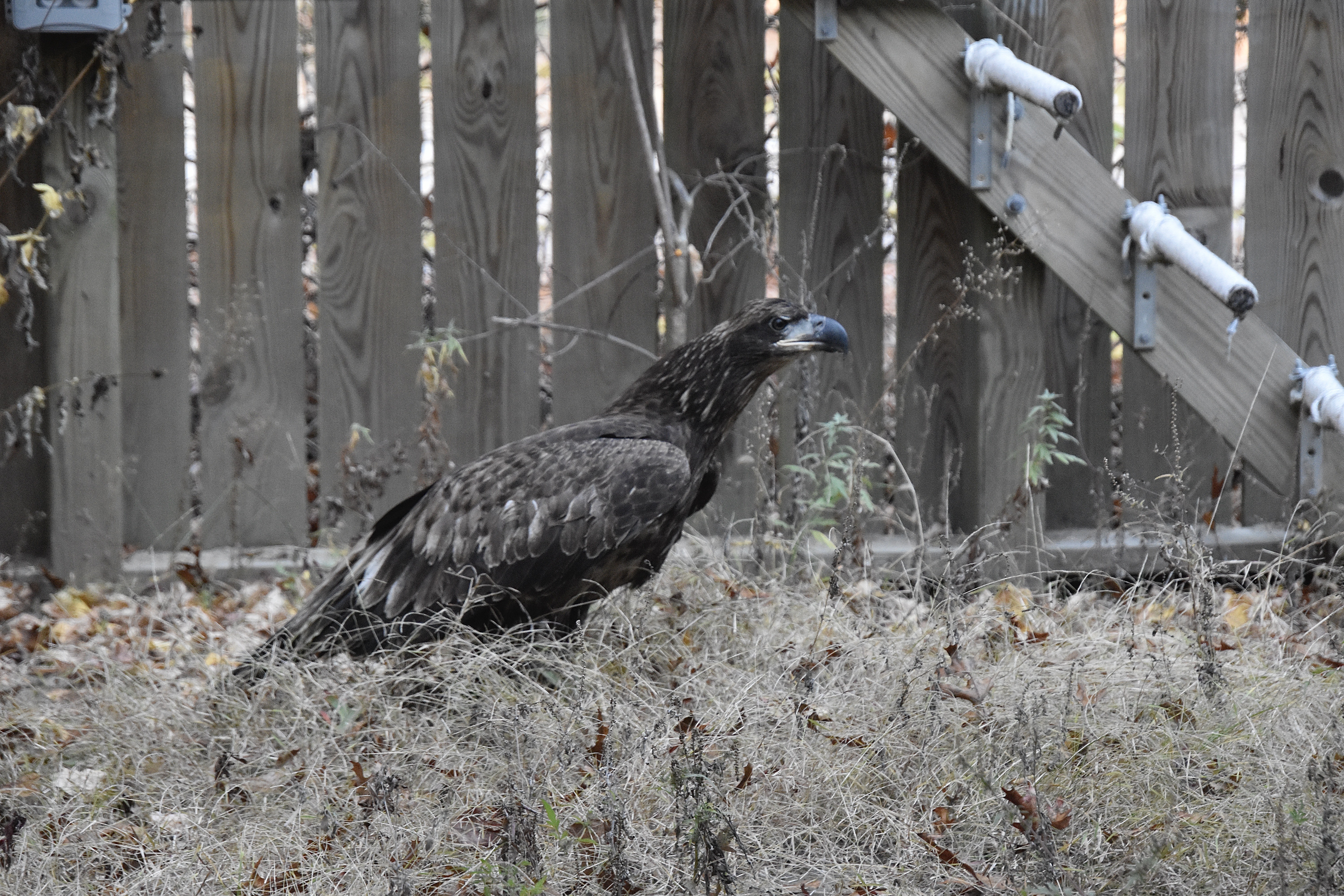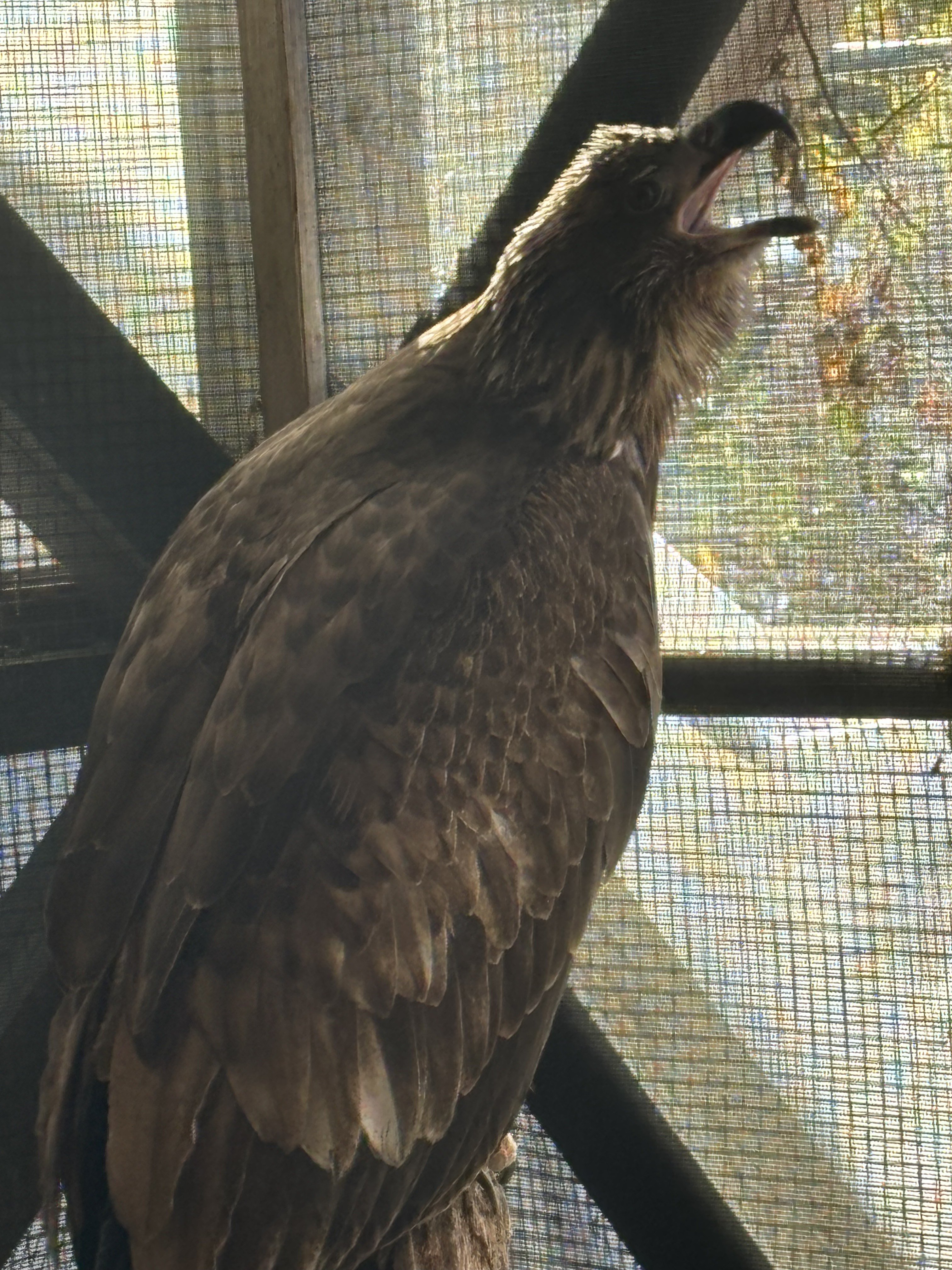Evelyn Alexander Wildlife: Juvenile Bald Eagle in Recovery

As the national emblem of the United States since 1782, the bald eagle is incredibly important to the culture of our country, but also to our local ecosystems as top predators. Bald eagles are still protected by the Golden Eagle Protection Act, and the Evelyn Alexander Wildlife Rescue Center (EAWRC) heavily prioritizes their safety and rehabilitation.
On Oct. 30, a call about a juvenile bald eagle caught in brambles was made. Kelly Gang, volunteer fire person from Southampton Village, opted to pick up and rescue the eagle, which was stuck in thorns. “She was a bloody mess from all those thick thorns,” Kathleen Mulcahy, executive director of EAWRC, says. Despite the fact that Gang was injured, the young eagle only appeared dazed and confused.
“The eagle was likely chasing a small bird who entered the brambles to hide, but the eagle’s immense size prevented it from escaping,” Mulcahy explains.
From all of the thrashing around, hospital employees, such as Rose Lynch, were surprised that no physical injuries were obtained, and were hoping for a quick and easy rehabilitation.
“We know the eagle is a juvenile since it hasn’t developed its classic white head yet, and likely a female since it already weighs 10 pounds, which is much larger than males at that age,” Mulcahy adds.
“We get our fair share: 90% of raptors (birds of prey) don’t survive their first year, so the majority of eagles that the center receives are juvenile,” Lynch says.
The bald eagle showed strong signs of recovery, and EAWRC employees transported her to their flight cage, which is a large but closed-in space designed to test the flight and recovery of birds of prey. Unfortunately, however, the eagle refused to fly and had to be brought back into the hospital.

“The bird is still eating and doing well, but she is angry and dazed. This could be a sign of underlying issues,” Lynch explains. To determine if any other issues are present, the EAWRC took her to get X-rayed and blood work at the office of Dr. Johnson. “The dazed behavior was very confusing since no physical issues were found, yet could be a symptom of head trauma, lead and mercury poisoning, or malnourishment,” Lynch says. However, the eagle is extremely healthy, so it’s more likely to be mercury or lead poisoning and trauma. Dr. Johnson will be testing her for these heavy metals as well as west nile virus and checking red blood cell counts.
Eagles are prone to mercury and lead poisoning, as they mainly have a fish-based diet. While they are also scavengers and will practically eat anything, they mostly compete with ospreys and seals. Lynch adds, “Eagle talons are very blunt and strong, while ospreys have curved and hook-like talons. Since ospreys are better at fishing, eagles will often steal fish from ospreys instead of fishing themselves.”
While waiting for results from Dr. Johnson, EAWRC employees treated her for rodenticide poisoning, which is an anticoagulant. Lynch explains, “While these rodenticides are used to kill rats, when these birds prey on rats, the poisoning builds up in the bird’s body and is largely more effective on the bird.” Luckily, nothing was found to suggest that.
“A unique fact about birds,” Lynch explains, “is that their bones are more hollow than humans and have a honeycomb-like structure. This is why the eagle is enormous but only weighs 10 pounds.” This light bone structure is to make flying easier, however when birds are hit by cars or windows, it’s increasingly detrimental as they can sustain fractures and trauma much easier, and also why Dr. Johnson is doing a full-body X-ray.
She’s now vocalizing and positioning herself in a defensive manner, which is looking normal, and better than her original condition of being dazed and unresponsive. Lynch says, “Dr. Johnson’s office recently responded, and stated that they might possibly need to do in-depth skull X-rays if the bloodwork isn’t clear.” Once all tests are in, if everything is normal, the EARWC employees will bring her to the flight cage again, and she will hopefully be released. “Before we release her,” Mulcahy continues, “the Department of Environmental Conservation (DEC) is coming to tag the bald eagle and track her as an endangered species.”
“Many young raptors are left behind by their parents to figure things out themselves, which is why we always receive younger raptors on average,” Lynch explains. “If you find young hawks, eagles or other raptors that are a bit ‘friendly’ or dazed, they should be brought to us, as something is likely wrong.”
The center is located at 228 West Montauk Highway, Hampton Bays. It can be reached at 631-728-4200, and animal emergencies can be reported at 631-728-WILD (9453). The center is open 9 a.m.–5 p.m. seven days weekly. Visit wildliferescuecenter.org for info.



